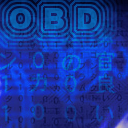OBD:TSFT: Difference between revisions
m (typos) |
m (changed family) |
||
| Line 1: | Line 1: | ||
{{OBD_File_Header | type=TSFT | prev=TSFL | next=TSGA | name=Font | family= | {{OBD_File_Header | type=TSFT | prev=TSFL | next=TSGA | name=Font | family=Interface | align=center}} | ||
[[ | [[Image:tsft_a.gif]] | ||
[[ | [[Image:tsft_m.gif]] | ||
[[ | [[Image:tsft_e.gif]] | ||
| Line 72: | Line 72: | ||
{{OBD_File_Footer | type=TSFT | prev=TSFL | next=TSGA | name=Font | family= | {{OBD_File_Footer | type=TSFT | prev=TSFL | next=TSGA | name=Font | family=Interface}} | ||
{{OBD}} | {{OBD}} | ||
Latest revision as of 01:46, 7 December 2023
|
|

|
| Offset | Type | Raw Hex | Value | Description |
|---|---|---|---|---|
| 0x000 | res_id | 01 03 00 00 | 3 | 00003-.TSFT |
| 0x004 | lev_id | 01 00 00 00 | 0 | level 0 |
| 0x008 | dead[6] | AD DE | dead | not used |
| 0x00E | int16 | 07 00 | 7 | font size in points |
| 0x010 | int32 | 01 00 00 00 | 1 | font option; the following options are possible:
|
| 0x014 | int16 | 09 00 | 9 | ascender height |
| 0x016 | int16 | 02 00 | 2 | descender height |
| 0x018 | int16 | 02 00 | 2 | leading height |
| 0x01a | int16 | 02 00 | 2 | ignored |
| Room for 256 TSGA links (only the first one is typically used for Western languages) | ||||
| 0x01C | link | 01 04 00 00 | 4 | link to 00004-.TSGA (glyph array for character codes 0-255) |
| 0x020 | link | 00 00 00 00 | 0 | unused |
| ... | ... | ... | ... | ... |
| 0x418 | link | 00 00 00 00 | 0 | unused |
| Pixel data for the glyphs (8-bit intensities for four pixels at a time, stored as 32-bit integers) | ||||
| 0x41C | int32 | 4F 0E 00 00 | 3663 | array size (one element has a length of 4 bytes) |
| 0x420 | int32 | FF FF FF FF | 255,255,255,255 | the first 4 pixels (all white) of the first used glyph |
| ... | ... | ... | ... | the rest of the pixel data |
| Alternative pixel storage used by PS2 implementation | ||||
| 0x41C | offset | 20 00 00 00 | 0x00000020 | offset of the pixel data in the .raw file |
- Differences between PS2 storage and PC/Mac storage
- The PC and Mac TSFTs store pixel data in a variable-size array (number of elements announced at 0x41C, then 4 bytes per element). PS2 TSFTs instead store the pixel data in the .raw file, using the field at 0x41C to store the offset.
- PC and Mac TSFTs use a whole byte for every pixel, i.e. 256 shades of gray, which in theory allows for subtle antialiasing. (In practice the antialiasing of Oni's fonts is anything but subtle, and the engine further posterizes them from 8-bit to 4-bit when rendering text.) PS2 fonts use only 2 bits per pixel, i.e., only 4 degrees of brightness/opacity.
- PC and Mac use a "black-on-white" representation of the font, with blank areas stored as 0xFF and fully opaque pixels as 0x00. PS2 uses "white-on-black", so a single opaque pixel in a row of four will be stored as 0x03, 0x0C, 0x30 or 0xC0.
- On PC and Mac, the pixel rows for a given glyph can span across several 4-byte array elements, but pixel data for a new glyph must always start at the first byte of an array element (glyph data in a PC or Mac TSGA is indexed by TSFT array element, not by pixel). Therefore, on PC or Mac, if a glyph has, say, 33 8-bit pixels, then there will be 33 bytes of actual storage, spanning 4 whole array elements and 1 byte of a 5th element, and the rest of the 5th element (3 bytes) will be padded (typically with "DE AD" bytes). Inside the PS2 .raw file, the storage is not padded or aligned in any way, and the indexation for each glyph (from TSGA) is by pixel, i.e. by quarter-of-a-byte.
- Same as on PC and Mac, pixel rows are stored top-to-bottom, and each row is stored left-to-right, using lower bits first. For example, the 4x11 bitmap for a 7pt regular double-quote character ("), would be encoded as the following 11 bytes if it was byte-aligned:
byte 0x00 (00000000 low-to-high) byte 0x33 (11001100 low-to-high) byte 0x33 (11001100 low-to-high) byte 0x33 (11001100 low-to-high) byte 0x00 (00000000 low-to-high) byte 0x00 (00000000 low-to-high) byte 0x00 (00000000 low-to-high) byte 0x00 (00000000 low-to-high) byte 0x00 (00000000 low-to-high) byte 0x00 (00000000 low-to-high) byte 0x00 (00000000 low-to-high)
However, the actually stored pixel data for (") is shifted by half a byte because of the previous two glyphs, which are both 3x11 and take up 33 quarter-bytes each. Therefore the actual storage for (") looks like this:
byte 0x?0 (....0000 low-to-high, lower 4 bits belong to previous glyph) byte 0x30 (00001100 low-to-high) byte 0x33 (11001100 low-to-high) byte 0x33 (11001100 low-to-high) byte 0x03 (11000000 low-to-high) byte 0x00 (00000000 low-to-high) byte 0x00 (00000000 low-to-high) byte 0x00 (00000000 low-to-high) byte 0x00 (00000000 low-to-high) byte 0x00 (00000000 low-to-high) byte 0x0? (0000.... low-to-high, upper 4 bits belong to next glyph)
| ONI BINARY DATA |
|---|
| TSFL << Other file types >> TSGA |
| TSFT : Font |
| Interface file |


